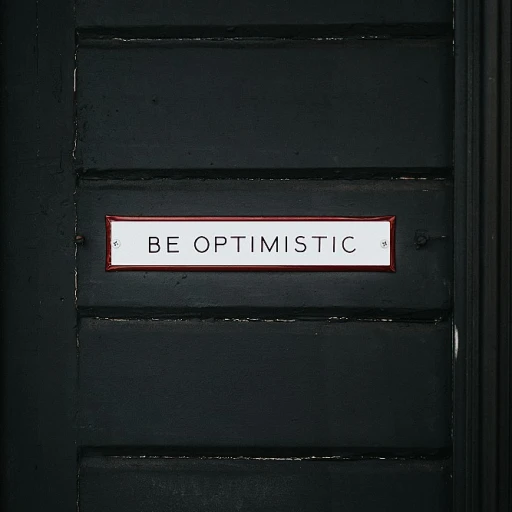The Evolving Role of the CHRO in Strategic Planning
Redefining Strategic Roles
The contemporary business environment keeps reshaping roles and responsibilities every other day. The CHRO, once perceived as merely a planner and manager of the workforce, now holds a seat at the strategic planning table. The era when HR was just about hiring and payroll is long gone. Today, CHROs are expected to drive corporate strategy, contributing significant insights that can steer companies towards success. With the fast-paced changes in technologies and market conditions, CHROs are not only advisors but partners to the CEO and other C-suite folks. They challenge the status quo, fostering a mindset that goes beyond KPIs, focusing on human-centric strategies that will future-proof business objectives. CHROs find themselves balancing between tactical HR duties and the larger organizational mission. To understand this transition better, consider how aligning human capital with broader business goals plays a crucial part. The insights these HR leaders bring to the table help reshape business strategy, bridging the gap between company ambitions and human resources. Explore further insights on this evolution. As businesses outgrow traditional hierarchical systems, CHROs champion a leadership style that fosters growth and innovation. A strategic imperative is realizing that nurturing talent and leadership isn't a one-off training exercise but an ongoing strategic investment. Their insights guide the identification of future leaders and ensure they have the tools and guidance required to thrive. Furthermore, CHROs are spearheading the use of data in decision-making, drawing on analytics to shape future plans and forecast HR demands. A focused eye on metrics and trends helps predict shifts and adjust strategies accordingly, ensuring that businesses stay ahead of the curve. CHRO insights are foundational in building a culture where innovation isn't just encouraged, but expected.Aligning Human Capital with Business Objectives
Connecting People to Business Goals
Aligning human capital with business objectives is more than just a buzzword; it's the heartbeat of a thriving organization. When employees understand and connect with the company's goals, their motivation and productivity soar. This isn't just about having the right people in the right seats, but about ensuring everyone is rowing in the same direction.
Consider a tech company that revamped its strategy by focusing on employee alignment. They started with open dialogues, allowing team members to voice their ideas and concerns. This approach not only fostered a sense of belonging but also sparked innovation. Employees felt valued, which translated into a 20% increase in project efficiency within six months.
Empowerment Through Communication
Communication plays a pivotal role in this alignment. Regular updates, transparent goals, and feedback loops create an environment where everyone knows their role and its impact on the bigger picture. It's about creating a culture where questions are encouraged, and feedback is not just welcomed but acted upon.
One retail giant used town hall meetings to bridge the gap between executives and frontline staff. These sessions weren't just about sharing updates; they became a platform for employees to contribute ideas that directly influenced company strategy. The result? A more engaged workforce and a noticeable boost in customer satisfaction.
Strategic Workforce Planning
Strategic workforce planning is the backbone of aligning human capital with business objectives. It's about anticipating future needs and ensuring the organization is prepared. This involves identifying skill gaps and investing in training and development to meet future demands.
A financial services firm implemented a strategic workforce plan that focused on upskilling employees in digital competencies. This foresight not only prepared them for the digital shift but also positioned them as industry leaders. Their proactive approach led to a 15% increase in market share over two years.
Aligning human capital with business objectives is a continuous process, requiring commitment from all levels of the organization. It's about creating a culture where everyone feels part of the journey, driving the company towards success. For more insights on strategic leadership, check out Unlocking CHRO Insights for Strategic Leadership.
Leadership Development: A Strategic Imperative
Empowering Leaders for Tomorrow
In the fast-paced business environment, developing strong leadership is more than just a checkbox on a corporate agenda. It's about nurturing a mindset that can steer organizations through challenges and opportunities alike. The Chief Human Resources Officer (CHRO) plays a pivotal role in this process, acting as a catalyst for leadership development and aligning human capital with business goals.
One way CHROs can contribute is by identifying potential leaders within the organization. This involves recognizing individuals who not only have the skills but also the passion and drive to lead. By fostering a culture where leadership potential is spotted early, companies can build a robust pipeline of future leaders ready to take on bigger roles when the time comes.
Investing in Leadership Training
Leadership development is not a one-size-fits-all approach. Tailored programs that focus on specific needs of the organization and the individual can yield significant results. Whether it's through mentorship programs, workshops, or executive coaching, the key is to provide opportunities for leaders to grow and learn continuously.
For example, consider a company that launched a mentorship program pairing seasoned executives with emerging leaders. This initiative not only boosted the skills of the participants but also strengthened inter-departmental relationships, fostering a more cohesive work environment.
Building a Resilient Leadership Culture
Creating a resilient leadership culture means encouraging leaders to be adaptable and open to change. In times of uncertainty, leaders who can pivot and inspire their teams to follow suit are invaluable. This adaptability is often cultivated through experiences that challenge leaders to think outside the box and embrace innovative solutions.
Moreover, by aligning leadership development with business objectives, CHROs ensure that the leadership pipeline is not just filled with capable individuals but those who are ready to drive the company forward in alignment with its strategic goals.
For more insights on how CHROs can drive business success, explore our article on key strategies for CHROs.
Data-Driven Decision Making in HR
Empowering Decisions with HR Data
In today's business environment, data isn't just numbers on a page—it's the heartbeat of decision-making. For CHROs, leveraging data effectively can transform human resources from a support function into a strategic powerhouse. Let's explore how data-driven decision-making can be a game-changer for your organization.
Consider a scenario where a company is facing high employee turnover. Traditional methods might focus on exit interviews or generic surveys, but a data-driven approach digs deeper. By analyzing patterns in employee engagement scores, performance metrics, and even social interactions within the company, HR can pinpoint the root causes of dissatisfaction and address them proactively.
Real-Time Insights for Real-World Challenges
Data analytics tools provide real-time insights that allow HR leaders to respond to challenges as they arise. For instance, predictive analytics can forecast talent shortages, enabling the company to plan recruitment strategies ahead of time. This proactive approach not only saves costs but also ensures that the organization remains agile and competitive.
Moreover, data can help in aligning human capital with business objectives. By understanding the skills and competencies of the workforce, CHROs can design targeted training programs that bridge gaps and enhance productivity. This alignment is crucial for achieving long-term business goals and maintaining a motivated workforce.
Building a Culture of Trust with Data
Transparency in data usage builds trust within the organization. When employees see that data is used ethically and responsibly, it fosters a culture of openness and accountability. This trust is essential for successful change management, as it encourages employees to embrace new initiatives and contribute to the company's success.
In summary, data-driven decision-making in HR isn't just a trend—it's a necessity. By harnessing the power of data, CHROs can make informed decisions that drive business success and create a thriving workplace culture.
Fostering a Culture of Innovation
Encouraging Creativity and New Ideas
In the fast-paced business environment, sparking creativity and nurturing fresh ideas isn't just a nice-to-have—it's a necessity. Companies that encourage their teams to think outside the box often find themselves ahead of the curve. Consider the story of 3M, where a culture of innovation led to the creation of the Post-it Note. Employees were encouraged to experiment, leading to groundbreaking products that might have seemed impossible at first.
Building an Innovative Environment
Creating an atmosphere where innovation thrives starts with leadership. The CHRO plays a pivotal role in fostering an environment where employees feel safe to share and explore new ideas. This can be achieved by:
- Open Communication: Encourage dialogue across all levels. When employees feel heard, they're more likely to contribute innovative ideas.
- Reward Systems: Recognize and reward creativity. This doesn't always mean monetary rewards—sometimes, acknowledgment and appreciation can go a long way.
- Flexible Workspaces: Allow for spaces that inspire creativity, whether through collaborative areas or quiet zones for deep thinking.
Learning from Setbacks
Embracing a culture of innovation also means accepting that not every idea will succeed. But even failures can be valuable learning experiences. Companies like Google have famously celebrated their failures as much as their successes, using them as stepping stones for future innovations. It's crucial for leaders to cultivate a mindset where setbacks are seen as opportunities for growth rather than roadblocks.
Empowering Teams with Data
As discussed in previous sections, data-driven decision-making is a powerful tool. By leveraging data, HR can identify trends and areas ripe for innovation. For example, analyzing employee feedback and performance data can reveal insights into which processes need a fresh approach. This not only aids in strategic planning but also empowers teams to make informed decisions that drive innovation.
In conclusion, fostering a culture of innovation requires a delicate balance of encouragement, support, and the willingness to learn from failures. With the right leadership and tools, businesses can transform challenges into opportunities for growth and success.





-large-teaser.webp)








